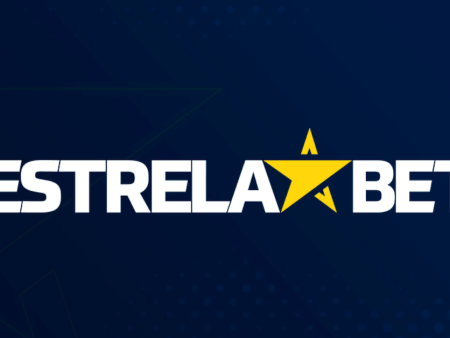
From Betting on JFK Conspiracies to US Elections: Polymarket
In the ever-expanding universe of cryptocurrency and decentralized finance, few platforms have generated as much buzz, utility, and controversy as Polymarket. From forecasting the outcome of the U.S. presidential election to facilitating trades on fringe topics like the polymarket jfk theories, this platform has established itself as the world’s leading decentralized information market. Polymarket is more than just a betting site; it’s a real-time, financial exchange where users wager on the outcomes of future events, creating a powerful engine for forecasting that is frequently cited by mainstream media.
This guide provides a comprehensive, 3,500-word exploration of the Polymarket ecosystem. We will dissect how it works, from its blockchain foundation to the mechanics of its outcome shares. We’ll examine its most controversial predictions, explore its main competitors in the kalshi vs polymarket debate, and delve into pressing questions like “is Polymarket biased?” and “is Polymarket accurate?”. Whether you’re a developer interested in the polymarket api, a trader looking for an edge, or a job seeker exploring polymarket careers, this guide covers everything you need to know about the platform shaping the future of information.
Polymarket at a Glance: Key Statistics
To understand the scale and impact of Polymarket, it’s helpful to look at the numbers that define its journey and current standing in the market.
- Date Founded: 2020
- Founder: Shayne Coplan
- Blockchain: Polygon (an Ethereum Layer-2 scaling solution)
- Trading Currency: USDC (USD Coin)
- Total Lifetime Volume: Over $1.2 Billion (as of late 2025)
- Number of Predictions/Markets Created: Over 10,000
- Key Investors: Founders Fund (Peter Thiel), Vitalik Buterin, Dragonfly Capital
- Legal Status in the U.S.: Not available to U.S. persons due to a 2022 settlement with the CFTC.
How Does Polymarket Work? A Step-by-Step Guide
At first glance, Polymarket might seem complex, but its core mechanics are built on a simple, powerful concept: turning event outcomes into tradable shares. For those wondering “polymarket 怎么用” (which translates to “how to use Polymarket”), the process is straightforward for anyone familiar with basic trading concepts.
- The Market: Every event is a market. This could be “Will inflation be above 3% next quarter?” or a more specific political market like one concerning trump polymarket odds.
- Outcome Shares: For most markets, there are two types of shares: “Yes” shares and “No” shares. A full set (one Yes and one No) is always equal to $1.00 in value upon resolution.
- Price as Probability: Shares trade between $0.01 and $0.99. The price of a “Yes” share represents the market’s collective belief in the probability of that outcome. If a “Yes” share costs $0.60, the market implies a 60% chance of the event happening. The corresponding “No” share would trade at $0.40.
- Trading and Resolution: You can buy or sell shares at any time before the market’s end date. If you buy “Yes” shares at $0.60 and the probability (and thus the price) rises to $0.80, you can sell for a profit. When the event concludes, the market “resolves.” If the outcome is “Yes,” all “Yes” shares become worth $1.00 each, and all “No” shares become worthless.
- Using USDC: All transactions are in USDC, a stablecoin pegged to the U.S. dollar. This eliminates the price volatility of cryptocurrencies like Bitcoin, ensuring that the value of your trades is stable.
This system transforms a simple bet into a dynamic trading experience, where users react to new information in real-time.
The Tech Behind the Predictions: Blockchain and Decentralization
Polymarket’s foundation on blockchain technology is what separates it from traditional prediction platforms and is central to its value proposition.
- Polygon Blockchain: Polymarket runs on the Polygon network. This allows for near-instantaneous transactions with very low fees, making it feasible to trade small amounts without being penalized by high gas fees common on the main Ethereum network.
- Smart Contracts: Every market is a smart contract—a self-executing piece of code with predefined rules. The contract holds all the funds in escrow and automatically distributes payouts upon resolution. This removes the need for a trusted central party, reducing counterparty risk.
- Non-Custodial Wallets: Users interact with Polymarket through their own crypto wallets (like MetaMask). You always maintain control of your funds. The platform never holds your money, which is a core tenet of decentralized finance and a major security advantage. This architecture makes it incredibly resilient; even if the Polymarket website goes down, the underlying smart contracts on the blockchain continue to function.
From the Sublime to the Ridiculous: Polymarket’s Most Controversial Predictions
The open, user-generated nature of Polymarket means its markets span the entire spectrum of human interest, from critical geopolitical events to bizarre pop culture ephemera and even the assassination of JFK. Here are some of the most controversial and high-volume markets that have appeared on the platform, showcasing its unique position at the intersection of finance and public discourse.
- U.S. Presidential Election (Perpetual): By far the highest volume and most influential market. The trump polymarket odds are constantly cited by news outlets as a real-time sentiment tracker. It dwarfs all other markets in terms of liquidity and public interest.
- Geopolitical Conflicts: Markets on the outcomes of major global conflicts have been highly controversial. These markets attract significant volume but also raise ethical questions about profiting from human suffering.
- Celebrity Trials and Scandals: High-profile legal battles and celebrity drama consistently spawn popular markets, turning public gossip into a tradable asset class.
- Fringe and Conspiracy Theories: Polymarket’s open nature means that controversial topics inevitably find a home on the platform. For example, a market on polymarket jfk theories, while not based in mainstream fact, can appear and attract trading volume from those interested in speculative events. The existence of such markets highlights the platform’s commitment to free speech and neutrality, though it also attracts criticism.
- Will Trump win the Nobel Peace Prize?: The trump nobel peace prize polymarket market is a recurring example of a politically charged, speculative market. It demonstrates how the platform can be used to quantify sentiment on events that are highly unlikely but passionately debated.
On the Horizon: A Look at Upcoming Predictions (Illustrative Examples)
As of late 2025, the platform is buzzing with activity across various sectors. Here are some illustrative examples of markets you might find and their hypothetical prices:
| Market Prediction | “Yes” Price | Implied Probability | Analysis |
| Will the Fed cut interest rates by March 2026? | $0.35 | 35% | This polymarket recession market reflects economic uncertainty. A lower price indicates traders believe the Fed will maintain a hawkish stance in the short term. |
| Will Patrick Mahomes win the 2025-26 NFL MVP? | $0.18 | 18% | The polymarket nfl mvp market is an example of a popular sports prediction market. Mahomes is a favorite, but the price reflects a wide-open field of competitors. |
| Will Dogecoin reach $0.25 by the end of 2025? | $0.08 | 8% | A polymarket doge tracker market like this quantifies the hype versus reality for meme coins. The low price suggests skepticism despite a dedicated community. |
| Will the next NYC Mayor be a Republican? | $0.12 | 12% | The polymarket nyc mayor market is a long-term political bet. The price reflects the city’s strong Democratic leanings but leaves room for a potential upset. |
| Will a major government confirm alien existence? | $0.05 | 5% | This type of market is purely speculative but attracts volume from those who believe in fringe possibilities, similar in nature to the speculative trading seen on the polymarket jfk market. |
The Polymarket Ecosystem: For Developers, Traders, and Job Seekers
Polymarket is more than a platform; it’s a growing ecosystem with opportunities for various participants.
The Polymarket API: Powering a Data-Driven World
Polymarket offers a robust API (Application Programming Interface) that allows developers, data scientists, and hedge funds to access its vast repository of real-time data. The polymarket api can be used to:
- Build automated trading bots.
- Create custom data visualizations and dashboards.
- Conduct academic research on information markets.
- Integrate Polymarket odds into news articles and financial models. This tool is a key reason why Polymarket’s data is so widely disseminated and respected.
A Career in Prediction Markets: Polymarket Jobs and Careers
As the leader in its field, Polymarket is a sought-after workplace for those interested in the intersection of finance, crypto, and technology, and even conspiracies such as the JFK assasination. Polymarket jobs span a range of fields, including software engineering (smart contracts, frontend), data science, marketing, and legal/compliance roles. Polymarket careers offer a unique opportunity to work at the cutting edge of decentralized finance. While the team is remote-first, it actively recruits top global talent to build out its platform and navigate the complex regulatory environment.
The Broader Prediction Market Landscape: Beyond Polymarket
Websites and operators such as Polymarket exist within a fascinating and often contentious industry known as prediction markets, or more academically, information markets. The core idea is not new; it dates back centuries to when groups of people would wager on outcomes to collectively forecast events. The first formalized versions emerged in academic settings, most notably the Iowa Electronic Markets (IEM), founded in 1988.
The IEM allowed students and faculty to trade “political stocks” and consistently proved to be a more accurate predictor of U.S. election outcomes than traditional polling, establishing the core principle that markets—where participants have “skin in the game”—are powerful forecasting tools. This success led to early commercial platforms like Intrade, which gained significant popularity in the early 2010s before being shut down for U.S. users by the CFTC, a regulatory challenge that would later define the industry’s trajectory.
The true revolution, however, came with the advent of cryptocurrency and blockchain technology. This innovation solved the critical hurdles that plagued earlier platforms: the need for a centralized custodian to hold funds and the difficulty of facilitating seamless cross-border payments. Blockchain introduced a trustless, transparent, and global infrastructure. Early crypto projects like Augur laid the groundwork, and Polymarket later refined the model with a user-friendly interface and by operating on a high-speed, low-cost network like Polygon, making prediction markets more accessible and efficient than ever before.
This evolution has created a vibrant but bifurcated ecosystem, with each model presenting a distinct set of advantages and disadvantages. On one hand, the decentralized, crypto-based model championed by Polymarket offers unparalleled freedom and innovation.
Markets can be created on any topic imaginable, from the price of Dogecoin to the outcome of a celebrity trial, without permission from a central authority. This leads to a richer, more diverse data set. On the other hand, this freedom comes at the cost of intense regulatory scrutiny, forcing such platforms to operate outside major jurisdictions like the United States. Conversely, the regulated model, epitomized by competitors like Kalshi, offers full legal compliance and security for U.S. users but sacrifices speed and scope, as every market must be vetted and approved by regulators.
The future of prediction markets will likely be defined by this ongoing tension between innovation and regulation. We can expect to see a continued split, with regulated domestic platforms serving as a stable but limited entry point, while global, decentralized operators like Polymarket push the boundaries of what can be forecast allowing users to bet on anything they can imagine, including conspiracies regarding JFK.
As the data generated by these markets becomes increasingly integrated into mainstream financial analysis, journalism, and even AI training models, their influence is poised to grow. The ultimate success of the industry will depend on its ability to navigate the complex legal landscape while continuing to prove its value as the most powerful tool for seeing the future.
Key Industry Information at a Glance
Notable Milestones in Prediction Markets:
- 1988: The Iowa Electronic Markets (IEM) is founded, providing academic proof of concept.
- 1999: Intrade (originally Trade Exchange Network) is launched, becoming the first major commercial success.
- 2014: The first major crypto-based prediction market, Augur, is conceptualized.
- 2020: Polymarket is founded, refining the crypto-based model with a focus on user experience and low fees.
- 2021: Kalshi becomes the first CFTC-regulated exchange in the U.S. allowing trading on event contracts.
Pros and Cons of the Prediction Market Model:
- Pros:
- High Forecasting Accuracy: Often outperforms traditional polling and expert analysis.
- Efficient Information Aggregation: Gathers dispersed knowledge into a single, real-time probability.
- Transparency and Immutability: Blockchain-based platforms offer a verifiable and tamper-proof record of trades and outcomes.
- Global Accessibility: Cryptocurrency allows for a borderless, permissionless financial system.
- Cons:
- Intense Regulatory Scrutiny: Faces major legal challenges, especially in the U.S., where markets are often classified as illegal swaps.
- Ethical Concerns: The creation of markets on sensitive topics like wars, deaths, or assassinations raises significant moral questions.
- Potential for Manipulation: Illiquid markets can be susceptible to manipulation by individuals with large amounts of capital.
- Systemic Bias: The user base may not be representative of the general population, potentially skewing the data on certain topics.
The Competitors: Kalshi vs Polymarket and Other Alternatives
While Polymarket is the leader in the crypto space, it’s not the only player. The main point of comparison is often kalshi vs polymarket.
The Main Event: Polymarket vs Kalshi
The polymarket vs kalshi debate boils down to a core difference: regulation.
- Polymarket: Global, decentralized, crypto-based, and permissionless. It offers a vast, unrestricted array of markets created by users. However, it is not available to U.S. persons.
- Kalshi: U.S.-based, fully regulated by the CFTC as a Designated Contract Market, and uses U.S. dollars. It is a legal and accessible platform for American users. However, every market on Kalshi must be approved by the CFTC, making its offerings more limited and less timely than Polymarket’s.
The choice between polymarket vs kalshi depends entirely on a user’s location and their preference for regulatory oversight versus market freedom.
Websites Like Polymarket and the Rise of the Polymarket Clone
Several other websites like polymarket exist, each with a different focus:
- Manifold Markets: A “play-money” prediction market that is more social and less financially driven.
- Insight Prediction: Focuses on scientific and academic predictions.
- Zeitgeist: A prediction market built on the Polkadot blockchain. The success of Polymarket has also inspired the development of the polymarket clone—open-source projects that replicate its core functionality on different blockchains. This demonstrates the power and appeal of its underlying model.
The Burning Questions: Accuracy, Bias, and Legality
Several critical questions surround the platform’s utility and reliability.
Is Polymarket Accurate? The Wisdom of the Crowd
This is the central question for any prediction market. Proponents argue that is polymarket accurate is a question answered by its track record. By forcing participants to risk capital, markets incentivize rational, informed predictions over cheap talk. Historically, major prediction markets have often outperformed traditional polling and expert analysis, especially in fast-moving situations like elections. While not infallible, Polymarket is widely considered one of the most accurate forecasting tools available today.
Is Polymarket Biased? Examining the Platform’s Neutrality
The question “is polymarket biased?” is complex. The platform’s code is neutral, but its user base may not be perfectly representative of the general population. Early on, crypto-based platforms tend to attract a specific demographic (tech-savvy, wealthier, more libertarian-leaning). This potential polymarket bias could skew the odds on certain markets. However, the financial incentive to correct mispriced assets is a powerful counterforce. If a market is biased, savvy traders have a profit opportunity to bet against the irrational consensus, theoretically pushing the price toward a more accurate probability.
The Platform’s Stability: What Happens When Polymarket is Down?
Like any website, the polymarket down issue can occur, where the frontend interface is temporarily unavailable. However, because the core logic and funds are secured by smart contracts on the Polygon blockchain, the markets themselves continue to operate. This is a key advantage of decentralization. An issue with the website does not halt the underlying trading infrastructure, which is a major concern for users of centralized websites like polymarket.

Conclusion
Polymarket represents a paradigm shift in how we access and interpret information. It has transformed abstract opinions into concrete, tradable data points, creating a powerful real-time forecasting engine. While facing significant regulatory hurdles and valid questions about market ethics and potential polymarket bias, its influence is undeniable. From the high-stakes drama of the trump polymarket markets to the speculative fringes of JFK conspiracies, Polymarket serves as a mirror to the world’s hopes, fears, and obsessions. Whether it ultimately becomes a globally accepted financial primitive or remains a niche for crypto-savvy traders, Polymarket has already proven that when you put money behind opinions, you get a fundamentally different and often more accurate picture of the future.





